MSI N580GTX Lightning Xtreme Edition Review
Written by
Harry Butler
June 3, 2011 | 12:56
Tags: #geforce #gtx-580 #gtx-580-overclocking #lightning #ln2 #overclocking
Companies: #msi #nvidia
1 — MSI N580GTX Lightning Xtreme Edition Review2 — N580GTX Lightning Xtreme Edition Test Setup3 — N580GTX Lightning Xtreme Edition Dirt 2 Performance4 — N580GTX Lightning Xtreme Edition Black Ops Performance5 — N580GTX Lightning Xtreme Edition Arma II Performance6 — N580GTX Lightning Xtreme Edition Bad Company 2 Performance7 — N580GTX Lightning Xtreme Power and Thermals8 — N580GTX Lightning Xtreme Results Analysis and Overclocking9 — MSI N580GTX Lightning Xtreme Edition Conclusion
Manufacturer MSI
UK price (as reviewed)£470 (inc VAT)
US price (as reviewed) TBC
Liquid nitrogen overclocking is a tricky business, and it requires the hardware you’re overclocking to be properly prepared. Teams will typically get the soldering irons out to volt-mod their graphics cards, unlocking significantly higher voltages and allowing for much higher clock speeds.
Click to enlarge
Rather than have overclockers mess up its cards with solder, though, MSI has instead decided to release a very special GeForce GTX 580 1.5GB card. The N580GTX Lightning Xtreme Edition is much more than your typical custom-cooled and factory-overclocked card; it comes with many of the voltage modifications that extreme overclockers use, ready to go. It also offers massively upgraded VRMs to handle the extra power required for massive overclocks, and double the usual amount of GDDR5 memory.
Needless to say, the card uses a custom PCB to house all this technical finery, and with the addition of MSI’s Twin Frozr III cooler, the card measures 295mm (11.5in) long. Impressively, though, MSI’s imposing cooler still only occupies two expansion slots, although you’d be wise to leave a decent gap between a pair of these of these cards if you’re using SLI, or if you plan to deploy a huge overclock to a single card.
The card’s power circuitry has been extensively upgraded
The Twin Frozr III cooler is composed of a bank of densely packed aluminium fins, which are arranged laterally along the length of the card. Through these fins run five (yes, five) nickel-coated copper heatpipes. Two are 8mm in diameter, while the central three have a thinner 6mm diameter.
After emerging from the GPU contact plate, the heatpipes bend back on themselves before running through the fins at various points along its length to ensure an even distribution of heat. Despite its size, the cooler is only attached by four screws, so it’s easy to detach in favour of an LN2 pot. The card’s memory and power delivery circuitry are cooled separately by a black aluminium contact plate, which benefits from the down-draft airflow from the two 90mm fans.
The PCB itself is loaded with enhanced voltage controls and power circuitry. In the place of the reference GTX 580 1.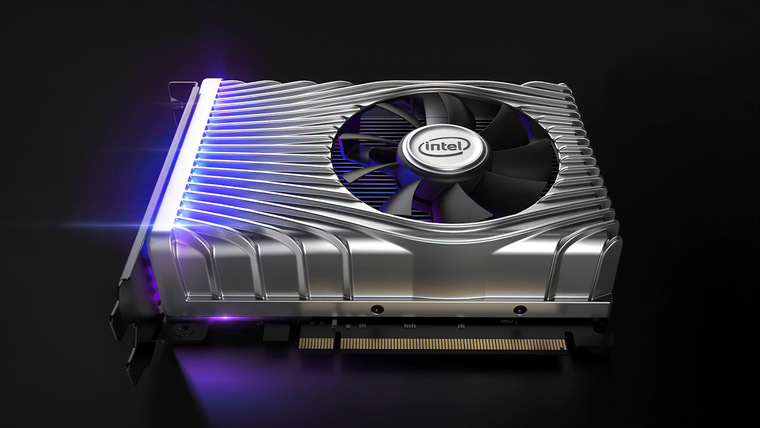 5GB’s 8+1 power phases (six for GPU, two for memory and the +1 for the board), the Lightning XE boasts an incredible 16+1 phases of power. The GPU uses 12 of these, while the memory has three phases; there’s a separate phase for the PLL/VDDCI power. The 12 GPU power phases are linked to a bank of load-level LEDs on the rear of the card, adding a nice lighting effect when fitted into a system. There’s also a set of four NEC Tokin proadlizers on the card’s rear, replacing some of the traditional solid capacitors.
5GB’s 8+1 power phases (six for GPU, two for memory and the +1 for the board), the Lightning XE boasts an incredible 16+1 phases of power. The GPU uses 12 of these, while the memory has three phases; there’s a separate phase for the PLL/VDDCI power. The 12 GPU power phases are linked to a bank of load-level LEDs on the rear of the card, adding a nice lighting effect when fitted into a system. There’s also a set of four NEC Tokin proadlizers on the card’s rear, replacing some of the traditional solid capacitors.
The Twin Frozr III cooler boasts five nickel plated copper heat pipes
Feeding all this power circuitry are two 8-pin PCI-E power connectors, mounted on the side of the card. This is also where you’ll find three voltage readout points for those handy with a multimeter. On the back of the card you’ll find three sealed switches (you need to unpeel the tape to use them) that unlock voltage options, allowing you to push levels of power through the card that would be unsafe with air-cooling.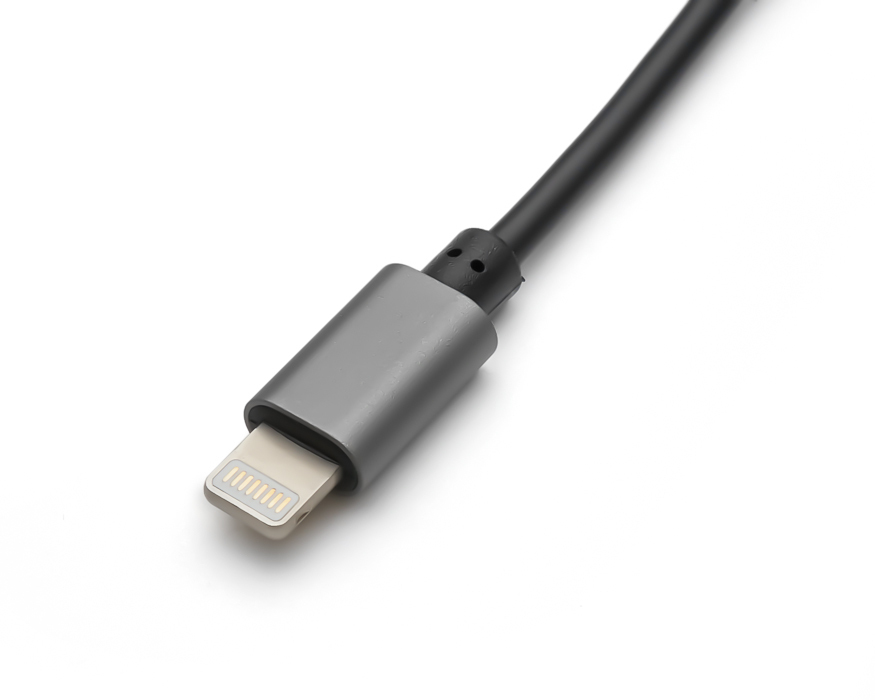 Next to these is a BIOS switch, which activates a secondary cold-bug-proof BIOS especially for LN2 overclocking. MSI told us that all of these switches are only for use with LN2 cooling, and should not be used unless you have an ample supply of the cold stuff on tap.
Next to these is a BIOS switch, which activates a secondary cold-bug-proof BIOS especially for LN2 overclocking. MSI told us that all of these switches are only for use with LN2 cooling, and should not be used unless you have an ample supply of the cold stuff on tap.
The LN2 overclocking switches on the card’s back
could break it unless you really are using extreme cooling.
Despite being LN2-ready, we doubt many people that buy this card will feel the need to grab some LN2 and void the card’s warranty. Happily, the card does ship with a factory overclock applied and offers a GPU core clock of 832MHz and a memory frequency of 4,200MHz (effective). These are improvements of 8 per cent and 3 per cent respectively, but are hardly earth-shaking improvements.
The final addition that MSI has made to the Lightning XE is a doubling of the card’s 1.5GB of GDDR5 memory. As the GF110 GPU can only address a limited number of GDDR5 modules, this has been accomplished by doubling the DRAM module density, with 12 Hynix 256MB modules surrounding the GPU.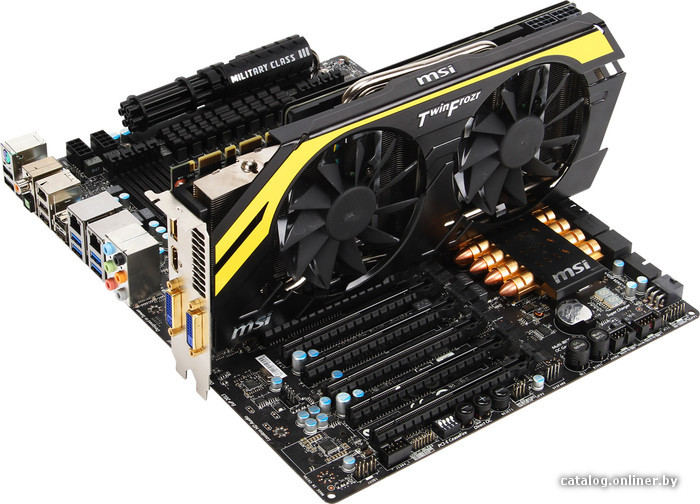 In the past, we’ve found that cards with significantly increased amounts of memory offer little extra performance below ultra-high resolutions, so we were keen to see if this remained the case with the Lightning XE.
In the past, we’ve found that cards with significantly increased amounts of memory offer little extra performance below ultra-high resolutions, so we were keen to see if this remained the case with the Lightning XE.
Specifications
- Graphics processor Nvidia GeForce GTX 580, 832MHz
- Pipeline 512 stream processors (1,664MHz), 48 ROPs
- Memory 3GB GDDR5, 4.2GHz effective
- Bandwidth 201.6GB/sec, 384-bit interface
- Compatibility DirectX 11, OpenGL 4.1
- Outputs/Inputs 2x DVI, HDMI, DisplayPort, 2x SLI
- Power connections 2x 8-pin, top-mounted
- Size 295mm long, dual-slot
- Warranty Two years
1 — MSI N580GTX Lightning Xtreme Edition Review2 — N580GTX Lightning Xtreme Edition Test Setup3 — N580GTX Lightning Xtreme Edition Dirt 2 Performance4 — N580GTX Lightning Xtreme Edition Black Ops Performance5 — N580GTX Lightning Xtreme Edition Arma II Performance6 — N580GTX Lightning Xtreme Edition Bad Company 2 Performance7 — N580GTX Lightning Xtreme Power and Thermals8 — N580GTX Lightning Xtreme Results Analysis and Overclocking9 — MSI N580GTX Lightning Xtreme Edition Conclusion
MSI N580GTX Lightning Xtreme Edition 3 GB Review
by XbitLabs Team
Last update 12 Jun 2021
XbitLabs participates in several affiliate programs. If you click links on our website and make a purchase, we may earn a commision. Learn More
If you click links on our website and make a purchase, we may earn a commision. Learn More
Today we are going to talk about another very fast and very expensive graphics accelerator. What are its advantages and drawbacks compared to the previously reviewed products from EVGA and Gigabyte? The answers to these and other questions are in our new review.
After testing two top-end graphics cards from Gigabyte and EVGA based on the Nvidia GF110 processor, we’ve got yet another same-class product to check out. This is the MSI N580GTX Lightning Xtreme Edition that was announced back in summer at Computex 2011.
Before the announcement MSI offered an ordinary N580GTX Lightning but the Xtreme Edition is supposed to be faster, more advanced and more expensive. Let’s take a closer look at it.
Contents
Technical Specifications
Packaging and Accessories
You don’t have to be a military aircraft expert to identify the American fifth generation fighter F-22 Raptor in the picture on the face and back sides of the box.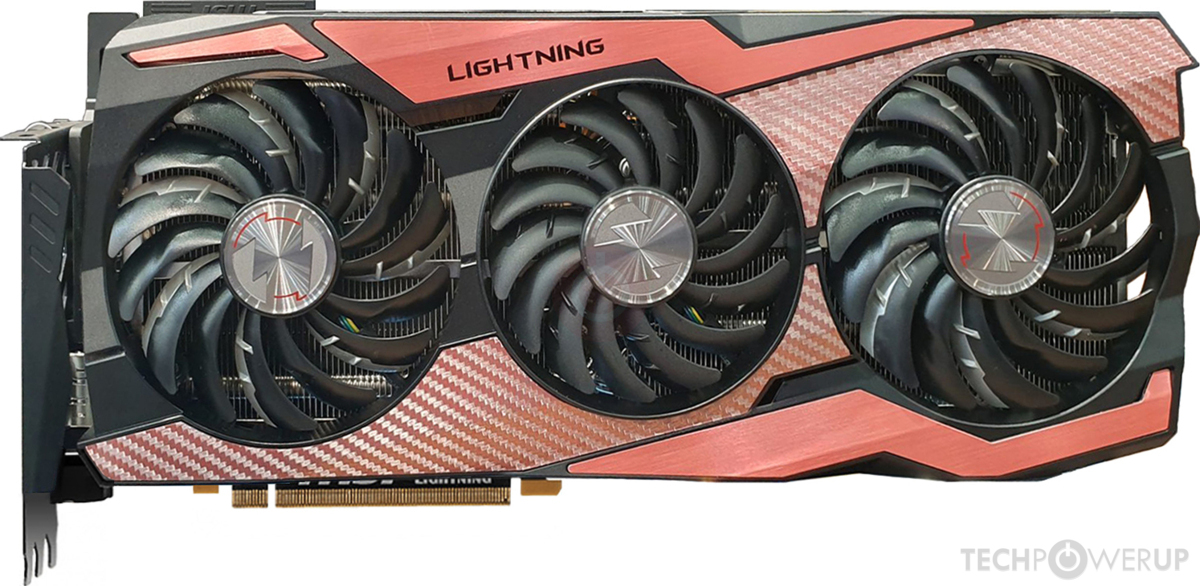 The box is huge, measuring 460x310x78 millimeters.
The box is huge, measuring 460x310x78 millimeters.
Besides the fighter, there are also a number of info icons, labels and slogans referring to the product contained within. If you need even more information, you can open up the top of the box and read as much about the graphics card as you want.
There is a window here, allowing you a peep at the graphics card’s cooler.
Included into the box are two power adapters (6-pin->8-pin), two flexible SLI bridges, one DVI-I->D-Sub adapter, three multimeter cables, a CD with drivers and utilities, and a promo booklet.
There are no games in the box although they would make the product more attractive considering its high price.
The graphics card is manufactured in China. It can be found in retail for about $594, which is its recommended price. The ordinary MSI N580GTX Lightning is $70 cheaper.
PCB Design
The anodized aluminum casing and acid-blue fans make this version of the card different visually from the ordinary one.
Both versions have the same specified size of 307x127x45 millimeters. However, this card is actually as long as 293 millimeters whereas its PCB is 280 millimeters long. Its weight is 1164 grams.
As opposed to the similar products from Gigabyte and EVGA, the MSI N580GTX Lightning Xtreme Edition offers a full selection of connectors: two DVI-I ports with support for high resolutions (dual-link), one HDMI 1.4a connector and a DisplayPort (version 1.2).
The connectors are all gold-plated. This can hardly improve the signal quality but looks nice anyway. There are two MIO connectors at the top of the PCB to build 2-, 3- and even 4-way SLI configurations.The MSI N580GTX Lightning Xtreme Edition is equipped with two 8-pin power connectors.
The card’s peak power draw is specified to be 260 watts but MSI recommends a 700-watt power supply for a computer with it (Nvidia’s recommendation is 600 watts).There are three connectors for cables you can use to measure the card’s GPU, memory and PLL voltages.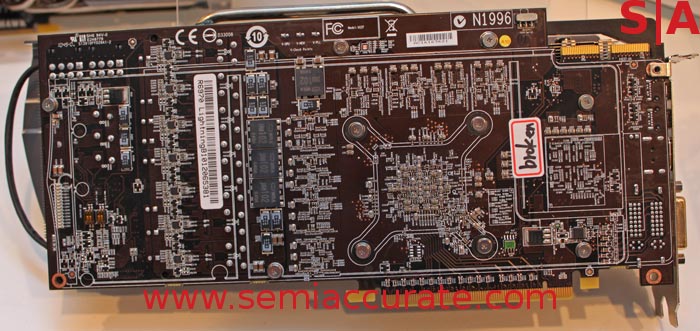
You can also use jumpers to increase the range of those voltages, switch from a PWM frequency of 260 to 310 MHz (PWM ClockTuner) and disable the current limiter (OCP Unlocker).
There is a BIOS version selector nearby. You can switch from the Original to LN2 version to remove any voltage tweaking limitations and avoid the so-called cold bug which can occur with liquid-nitrogen coolers.
The MSI N580GTX Lightning Xtreme Edition features a 16-phase power system with 12 phases for the GPU (based on a PWM controller uP6225AM) and four phases for the graphics memory (an uP6207AI controller).
Like the earlier-tested products from Gigabyte and EVGA, the MSI card employs high-quality DirectFETs that feature superior electrical as well as thermal properties. They can effectively give their heat away through both the heatsinks and the PCB.There are also four enhanced-capacitance Proadlizer NEC/TOKIN capacitors on the reverse side of the PCB.
These capacitors ensure increased stability at high voltages and frequencies and are employed by several makers in their top-end products. The N580GTX Lightning Xtreme also features a special Lightning Power Layer PCB that helps reduce interference and increase stability at overclocking. MSI says this card is Military Class II which means high-quality components with longer service life (Hi-c tantalum-core capacitors and Super Ferrite Chokes).
The N580GTX Lightning Xtreme also features a special Lightning Power Layer PCB that helps reduce interference and increase stability at overclocking. MSI says this card is Military Class II which means high-quality components with longer service life (Hi-c tantalum-core capacitors and Super Ferrite Chokes).
All this circuitry and electronics is complemented with beautiful LED illumination on the reverse side of the PCB.The Nvidia GF110-375 revision A1 chip was made in Taiwan on 40nm tech process on the 33rd week of 2011 (it is mid-August). It’s covered with a heat-spreader.
The GPU configuration is standard with 512 unified shader processors, 64 texture-mapping units and 48 raster operators. Its 3D frequencies are pre-overclocked from 772/1544 MHz to 832/1664 MHz at a voltage of 1.013 volts, which is somewhat lower than the frequencies of the Gigabyte and EVGA cards (855/1710 MHz). The frequencies are lowered to 51/101 MHz at a voltage of 0.962 volts in 2D applications.
As opposed to the regular Lightning, the Xtreme one sports twice the amount of onboard memory: 3072 megabytes in 12 FCFBGA-packaged chips from Hynix Semiconductor.
They are marked as H5GQ2h34MFR T2C, which means a rated access time of 0.4 nanoseconds, clock rate of 5000 MHz and voltage of 1.5 volts (1.35 volts for 2D mode). The memory of the N580GTX Lightning Xtreme Edition is pre-overclocked to 4200 MHz, which is 200 MHz higher than the memory frequency of the reference GeForce GTX 580 and 100 MHz higher than that of the Gigabyte GeForce GTX 580 SuperOverclock and EVGA GeForce GTX 580 Classified.
That’s the MSI N580GTX Lightning Xtreme Edition specs are reported by the GPU-Z utility.
Now let’s examine its cooler.
Cooling System
The N580GTX Lightning Xtreme Edition carries MSI’s exclusive Twin Frozr III cooler that has a nickel-plated copper base, five copper heat pipes and an aluminum heatsink with fans. The whole arrangement is covered with an aluminum casing.
The outermost pipes are 8 millimeters in diameter whereas the three middle ones, 6 millimeters. Every detail of the heatsink is nickel-plated; they are all soldered to each other. The copper base sports good finish quality, especially for a GPU cooler.There is thick gray thermal grease between the cooler and the GPU. We know nothing about its properties.
The copper base sports good finish quality, especially for a GPU cooler.There is thick gray thermal grease between the cooler and the GPU. We know nothing about its properties.
A metallic plate with thermal pads is used to cool the power circuit components.The cooler has two fans from Power Logic. It is the PLA09215B12H model with a dual ball bearing.
The fans have a form-factor of 92x92x15 millimeters but the impellers are 86 millimeters large. The speed of the fans is regulated automatically and can reach as high as 3500 RPM. The innovative design of the 11 impeller blades helps improve the air flow by 20%. The cooler features a dust removal system: the fans are rotating in the opposite direction for 30 seconds after turning on in order to blow dust speckles out of the dense heatsink. This is a questionable, yet unique, solution. Each fan is highlighted.
Using a temperature sensor, the cooler changes the color of the highlighting from blue to white upon reaching 45°C.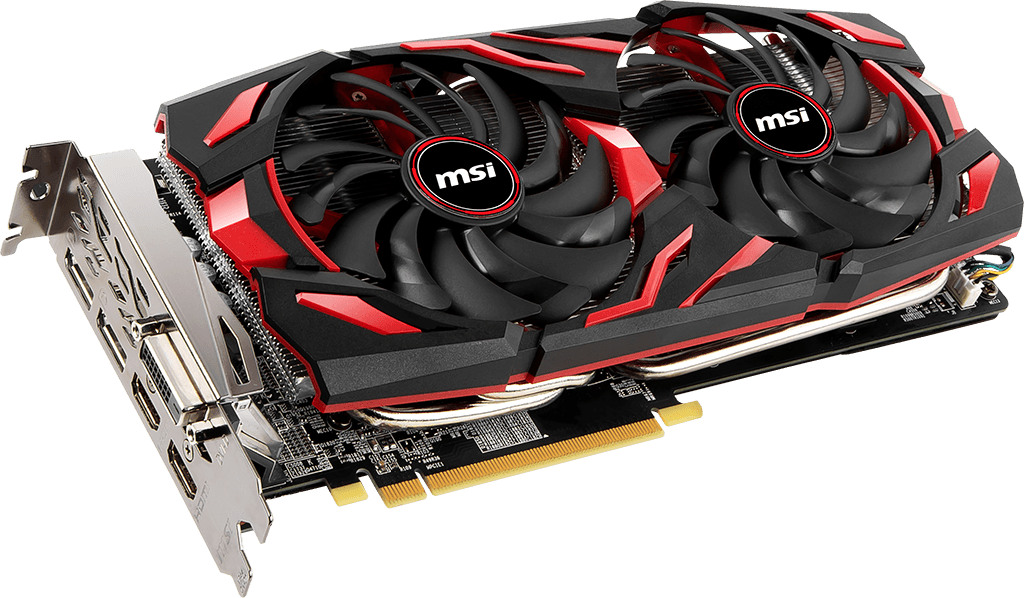 We checked out the card’s temperature while running Aliens vs. Predator (2010) in five cycles at the highest settings (2560×1600, 16x anisotropic filtering, 4x full-screen antialiasing).
We checked out the card’s temperature while running Aliens vs. Predator (2010) in five cycles at the highest settings (2560×1600, 16x anisotropic filtering, 4x full-screen antialiasing).
We used MSI Afterburner 2.2.0 Beta 8 and GPU-Z 0.5.5 as monitoring tools. This test was carried out with a closed system case at an ambient temperature of 24°C.MSI’s original cooler proved to be very effective in automatic mode as well as at the full speed of its fans.
Despite the increased frequencies, the GPU was only 67°C hot with the fans regulated automatically and 60°C at the full speed of the fans. That’s very low for a top-end GPU, especially as the fans were only rotating at 1980 RPM in the automatic regulation mode. How quiet is it?
We measured the level of noise using an electronic noise-level meter CENTER-321 in a closed room about 20 sq. meters large. The noise-level meter was set on a tripod at a distance of 15 centimeters from the graphics card which was installed on an open testbed.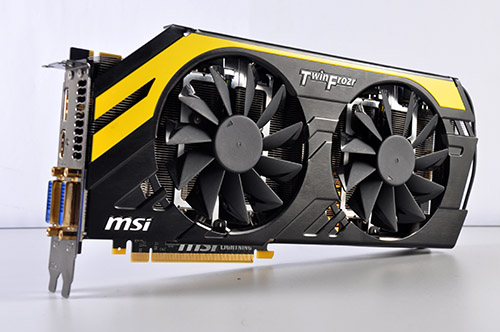 The mainboard with the graphics card was placed at an edge of a desk on a foam-rubber tray.
The mainboard with the graphics card was placed at an edge of a desk on a foam-rubber tray.
The bottom limit of our noise-level meter is 29.8 dBA whereas the subjectively comfortable (not low, but comfortable) level of noise when measured from that distance is about 36 dBA. The speed of the graphics card’s fan was being adjusted by means of a controller that changed the supply voltage in steps of 0.5 V.
We’ve included the results of the Gigabyte GeForce GTX 580 SuperOverclock into the diagram for the sake of comparison.
The vertical dotted lines mark the max speed of the fans in the automatic regulation mode. As you can see, the MSI cooler is somewhat noisier overall, but quieter than the Gigabyte cooler at low speeds. On the other hand, neither of these coolers can keep below the subjectively comfortable level of noise, so you may want to look for other solutions if you need a silent computer.
Overclockability
Our sample of the MSI N580GTX Lightning Xtreme Edition didn’t surprise us with its overclocking potential, yet we managed to make the card stable at GPU clock rates of 910/1820 MHz and a memory clock rate of 4780 MHz.
The good news is that the temperature of the overclocked card grew up by a mere 2°C and the fan speed, by only 100 RPM.We’ve tested three versions of GeForce GTX 580 recently, and MSI’s seems to have the most efficient and quiet cooler compared to Gigabyte’s WindForce 3X and EVGA’s GeForce GTX 580 Classified, let alone the cooling system of the reference GeForce GTX 580.
Performance
We’ve tested a lot of GeForce GTX 580 cards, including those with 3072 megabytes of memory, so we don’t want to give you the same info once again. We will limit ourselves to just a few tests of the MSI N580GTX Lightning Xtreme Edition at overclocked frequencies using a six-core Intel Core Extreme Edition i7-980X overclocked to 4.5 GHz. The results are compared to those of its two competitors as well as of the Sapphire Radeon HD 6970 2 GB Toxic Edition.
Aliens vs. Predator (2010)
Notwithstanding the high resolutions and maximum settings the MSI card delivers very high performance and doesn’t differ much from the other GeForce GTX 580-based products. Well, this should have been expected.
Well, this should have been expected.
Conclusion
The MSI N580GTX Lightning Xtreme Edition is a typical premium-class graphics card with everything that this positioning entails: a high-quality PCB with LED indication, durable components, stable operation even in overclocked mode (also with liquid-nitrogen coolers), dual BIOS, overclocked frequencies, a double amount of onboard memory, voltage-tweaking options, a high-performance Twin Frozr III cooler with temperature-dependent highlighting, a stylish exterior design, and good accessories. What else could we ask for? Perhaps, a lower noise level and a more affordable price. By the way, judging by the latest news from the Nvidia camp, we can really hope for the price to go down very soon.
Specs MSI N580GTX LIGHTNING XE graphics card NVIDIA GeForce GTX 580 3 GB GDDR5 (N580GTX LIGHTNING XE)
This is a demo of a seamless insert of an Icecat LIVE product data-sheet in your website. Imagine that this responsive data-sheet is included in the product page of your webshop. How to integrate Icecat LIVE JavaScript.
How to integrate Icecat LIVE JavaScript.
Embed the product datasheet into your content
Icecat LIVE: JS for MSI N580GTX LIGHTNING XE
Icecat Live DOC
CSV product data for MSI N580GTX LIGHTNING XE
CSV DOC
Download images pack
Icecat Add-ons
Download the free Open Icecat data-sheets
Download the Icecat taxonomy for »Graphics Cards»
Icecat PDF
More>>>
Short summary description MSI N580GTX LIGHTNING XE graphics card NVIDIA GeForce GTX 580 3 GB GDDR5:
This short summary of the MSI N580GTX LIGHTNING XE graphics card NVIDIA GeForce GTX 580 3 GB GDDR5 data-sheet is auto-generated and uses the product title and the first six key specs.
MSI N580GTX LIGHTNING XE, GeForce GTX 580, 3 GB, GDDR5, 384 bit, 4200 MHz
Long summary description MSI N580GTX LIGHTNING XE graphics card NVIDIA GeForce GTX 580 3 GB GDDR5:
This is an auto-generated long summary of MSI N580GTX LIGHTNING XE graphics card NVIDIA GeForce GTX 580 3 GB GDDR5 based on the first three specs of the first five spec groups.
MSI N580GTX LIGHTNING XE. Graphics processor family: NVIDIA, Graphics processor: GeForce GTX 580, Processor frequency: 832 MHz. Discrete graphics card memory: 3 GB, Graphics card memory type: GDDR5, Memory bus: 384 bit, Memory clock speed: 4200 MHz. DirectX version: 11, OpenGL version: 4.0. Cooling type: Active
Embed the product datasheet into your content
Icecat LIVE: JS for MSI N580GTX LIGHTNING XE
Icecat Live DOC
CSV product data for MSI N580GTX LIGHTNING XE
CSV DOC
Download images pack
Icecat Add-ons
Download the free Open Icecat data-sheets
Download the Icecat taxonomy for »Graphics Cards»
Report mistake
EN Access to this product is restricted. Please contact your account manager at Icecat.
Please contact your account manager at Icecat.
Specs
Reviews
Specs
Processor
CUDA
*
Graphics processor family
*
NVIDIA
Graphics processor
*
GeForce GTX 580
Processor frequency
*
832 MHz
Shader clock
1664 MHz
Parallel processing technology support
*
Not supported
Memory
Discrete graphics card memory
*
3 GB
Graphics card memory type
*
GDDR5
Memory bus
*
384 bit
Memory clock speed
4200 MHz
Ports & interfaces
HDMI ports quantity
*
1
DisplayPorts quantity
*
1
DVI ports quantity
2
Performance
PhysX
TV tuner integrated
*
Performance
DirectX version
*
11
OpenGL version
*
4. 0
0
HDCP
Dual Link DVI
*
NVIDIA 3D Vision
Full HD
Design
Cooling type
*
Active
Form factor
Full-Height/Full-Length (FH/FL)
Bracket height
Full-Height (FH)
Power
Power consumption (typical)
*
260 W
Weight & dimensions
Depth
127 mm
Height
45 mm
Width
305 mm
Other features
Mac compatibility
HDMI
Motherboard form factor
ATX
Reviews
| Source | Testseek summary | Average rating |
|---|---|---|
|
Updated: |
Uk has collected 22 expert reviews for MSI N580GTX LIGHTNING XE graphics card NVIDIA GeForce GTX 580 3 GB GDDR5 and the average expert rating is 89 of 100. Read the full review |
| Source | Review comments | Score |
|---|---|---|
|
pcgameware.co.uk Updated: |
While looking at the impressive Hazro HZ27WC it became apparent that running games at a resolution of 2560×1440 required significantly more horsepower than at 1920×1080. The MSI N580GTX Lightning Xtreme Edition has put in an impressive showing here at pcGameware outperforming a near stock GTX 580 by 23% in the Metro 2033 (2560×1440) benchmark. As this test is one of the best Real World DX11 tests available today, that re… |
|
|
hardwarecanucks.com Updated: |
With the MSI GTX Lightning freshly launched, many were surprised to hear that a brand new Lightning -dubbed the Xtreme Edition- would soon be launching. With the GTX 580 maturing like a fine wine, it has been interesting to see what NVIDIA’s board partners had in store for the market. We’ve already looked at Gigbayte’s Super Overclock and MSI’s Lightning and there even more custom cards on the horizon… Read the full review |
|
|
hardwarezone.com.ph Updated: |
In terms of aesthetics, the MSI N580GTX Lightning Xtreme Edition shares a number of similarities with its 1536MB GTX 580 Lightning counterpart . The Price Of EnthusiasmBeing one of the most expensive graphics card behind the ASUS Matrix GTX 580 Platinum, the MSI N580GTX Lightning Xtreme Edition has the eligibilities of a premium graphics card. It is among the fastest factory-overclocked cards that… Read the full review |
|
|
tbreak.ae Updated: |
MSI is no stranger to custom cooling solutions on graphics card; their Twin Frozr and Cyclone heatsinks are renowned in the hardware community. Highly overclocked; Huge heatsink keeps it cool; Dual fans are quiet; Dust removal Tech is brilliant; 3GB ram is great for multiple monitors… Need SLI configuration to take advantage in multiplemonitor setup… |
|
|
hardwarezone.com.my Updated: |
When it comes to graphics cards, MSI has established quite a reputation with its Hawk and Lightning series. Excellent cooler, Dualslot solution, Relatively high clock speeds out of the box… Too pricey, 3GB memory has little impact on performance… The specifications of the MSI N580GTX Lightning Xtreme are no doubt impressive. Clock speeds out of the box are among the highest we have seen and that 3GB of GDDR5 memory will surely catch the attention of any enthusiast. Throw in that unique, temperatur… Read the full review |
|
|
hardwarezone. Updated: |
When it comes to graphics cards, MSI has established quite a reputation with its Hawk and Lightning series. The Twin Frozr cooler on these cards particularly has caught our eye for being quiet and efficient at its task. It’s exactly why we have high hopes… The specifications of the MSI N580GTX Lightning Xtreme are no doubt impressive. Clock speeds out of the box are among the highest we have seen and that 3GB of GDDR5 memory will surely catch the attention of any enthusiast. Throw in that unique, temperatur… Read the full review |
|
|
xbitlabs. Updated: |
After testing two top-end graphics cards from Gigabyte and EVGA based on the Nvidia GF110 processor, we’ve got yet another same-class product to check out. This is the MSI N580GTX Lightning Xtreme Edition that was announced back in summer at Computex 2… The MSI N580GTX Lightning Xtreme Edition is a typical premium-class graphics card with everything that this positioning entails: a high-quality PCB with LED indication, durable components, stable operation even in overclocked mode (also with liquid-ni… |
|
|
pcper. Updated: |
Tired of hearing about MSI’s latest video cards? Me neither! It seems we have been on a roll lately with the latest and greatest from MSI, but happily that will soon change. In the meantime, we do have another MSI card to go over. This one is p… MSI really has this stuff down. Their Lightning series of cards for this particular generation are just second to none in my testing. The N580GTX Lightning Xtreme Edition takes all the goodness of the previous Lightning cards and adds in those three ext… |
|
|
hardocp. Updated: |
On May 31st, 2011 MSI released the ultimate GeForce GTX 580 GPU based video card. OK, it isn’t actually called the «ultimate» anything, but it does scream «Xtreme Edition,» in fact its written all over it. MSI has launched the N580GTX Lightning Xtreme… MSI has produced the best single-GPU GeForce GTX 580 GPU based video card we have seen yet. The N580GTX Lightning XE really does have everything including the kitchen sink. We’ve found the features supported to please any hardcore hardware enthusiast l… |
|
|
Bit-Tech. Updated: |
TBC is a tricky business, and it requires the hardware you’re overclocking to be properly prepared. Teams will typically get the soldering irons out to volt-mod their graphics cards, unlocking significantly higher voltages and allowing for much hig… Actively selling a card with an LN2 pedigree seems like an odd decision, especially as the majority of pro-overclockers are paid in free hardware for their expertise and feedback. What’s more, hardware is usually handed out at the start of competitions, i… Read the full review |
|
|
guru3d. Updated: |
When we tested the GeForce GTX 580 Lightning from MSI roughly a month ago, we stated that the product might become product of the year, it really is that good. But little did I know about an Xtreme edition that MSI still had in the works. Yep, Comp… To review the Lightning Xtreme edition of MSI’s GeForce GTX 580 really is to review the ‘regular’ lightning edition all over again. Very little has changed to be honest but we have to acknowledge it, how on earth can you improve a near perfect product ? T… Read the full review |
|
|
techpowerup. Updated: |
MSI has a long history of making highest-end enthusiast graphics cards for overclockers. Their «Lightning» series has seen several models, the latest being GTX 580 Lightning. Today MSI releases their new GTX 580 Lightning Xtreme Edition. The Xtreme Edi… Overclocked out of the box, 3 GB GDDR5 memory, Dual BIOS switch, Triple voltage change support, Low temperatures, Low power consumption, DIP switches for enthusiast overclockers, Native full-size HDMI & DisplayPort output, Support for DirectX 11, Support…
Noisy fan, 3 GB memory can not make a difference, Same clocks as previous GTX 580 Lightning, Power draw limiter could complicate advanced overclocking. MSI’s new GeForce GTX 580 Lightning Xtreme Edition builds on the success of the previous Lightning GTX 580. The only performance related difference is the inclusion of 3 GB of memory instead of 1.5 GB like on the successor. Unfortunately thoughout our… Read the full review |
|
|
guru3d.com Updated: |
MSI to unveil 10th Anniversary GeForce RTX 2080 Ti Lightning But before that happens — A Trip Down memory laneAt Computex 2019 starting in a week or two, MSI will release a 10th Anniversary Lightning edition of their graphics cards. Read the full review |
N580GTX Lightning Xtreme Edition, GeForce« GTX 580 832MHz, 3GB GDDR5 4200MHz, PCIe x16 SLI, 2x DVI + HDMI + DP, Retail
For extreme overclocking enthusiasts, the MSI Lightning series has always been the graphics card to die for. The N580GTX Lighting Xtreme Edition not only comes with a massive 3GB of GDDR5 graphics memory, but also incorporates Propeller Blade fans featuring two new technologies (Smart Temp Sensor and Dust Removal) and Twin Frozr III cooling. This FANtastic graphics card also supports Afterburner’s latest Triple Temp Monitor technology — not to mention the Triple Overvoltage support and top Military Class II components. Unique to the Lightning series, the N580GTX Lighting Xtreme Edition’s combination of Power4 Architecture and extreme overclocking design elements leave it the undisputed king of single-GPU graphics cards!
Unique to the Lightning series, the N580GTX Lighting Xtreme Edition’s combination of Power4 Architecture and extreme overclocking design elements leave it the undisputed king of single-GPU graphics cards!
Core/Memory
- 832 MHz Core
- 3072MB GDDR5 4200MHz Memory
Video Output Function
- Dual-link DVI x 2
- HDMI x 1
- DisplayPort x 1
Features:
V-Check Points
Bulit-in Voltage measurement points on graphics card or mainboard. No need to read hard and long datasheet to find the voltage reading points. Get accurate voltage of GPU and Memory on the fly. ‧Additional cables hold multimeter probes.
HDMI + DVI Output
HDMI and DVI are the most comprehensive used interfaces for high definition video display.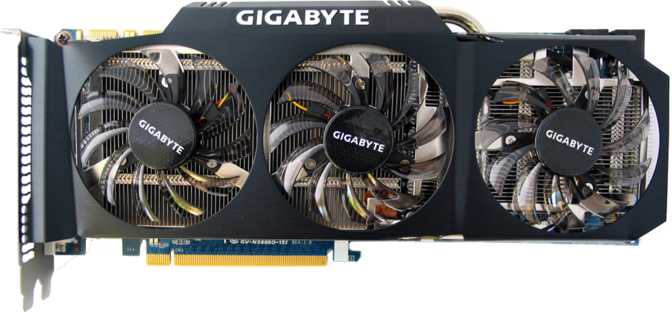 MSI adopts two interfaces to provide a complete output solution for users to enjoy the latest HD video such as blu-ray movie.
MSI adopts two interfaces to provide a complete output solution for users to enjoy the latest HD video such as blu-ray movie.
HDMI Support
MSI graphics cards offer the HDMI functionality to provide access to premium digital content. HDMI enables gaming enthusiasts to seamlessly connect to their LCD monitor to bring the ultimate multimedia experience. (Only 1 single HDMI cable is required while streaming audio/video data to flat-panel display devices, such as Plasma/LCD TVs, or projector.)
Afterburner
Afterburner co-development by MSI and Rivatuner, MSI releases the ultimate graphics card utility “Afterburner”. This utility enables all MSI graphics cards users to boost performance and to monitor all kinds of critical information in real-time. Afterburner is a completely free utility which is compatible with almost all MSI graphics cards.
MSI Solid Capacitor
MSI Graphics Card products utilities high quality solid capacitor. For the gamers and high-end users, this feature not only means that product has better quality components within, but also provide much stronger support while users want to engage in hard-core tuning.
For the gamers and high-end users, this feature not only means that product has better quality components within, but also provide much stronger support while users want to engage in hard-core tuning.
Blu-ray and HD DVD Support
Both support the latest specifications of Blu-ray and HD DVD(High Definition DVD). It comes with the latest GPU and DDRIII superior processing performance in which users can easily enjoy the high-definition video of 1920×1080(1080p/i).
PCI Express 2.0 Support
Designed to run perfectly with new PCI Express 2.0 bus architecture, offering a future proofing bridge to tomorrow’s most bandwidth-hungry games and 3D applications by maximizing the 5GT/s PCI Express 2.0 bandwidth (twice that of first generation PCI Express). PCI Express 2.0 products are fully backwards compatible with existing PCI Express motherboards for broadest support.
Meet RoHS regulations
MSI products are the first to be in conformity of the EU’s RoHS(Restriction of Hazardous Substances) regulations, reducing heavy metals and toxic materials in the products.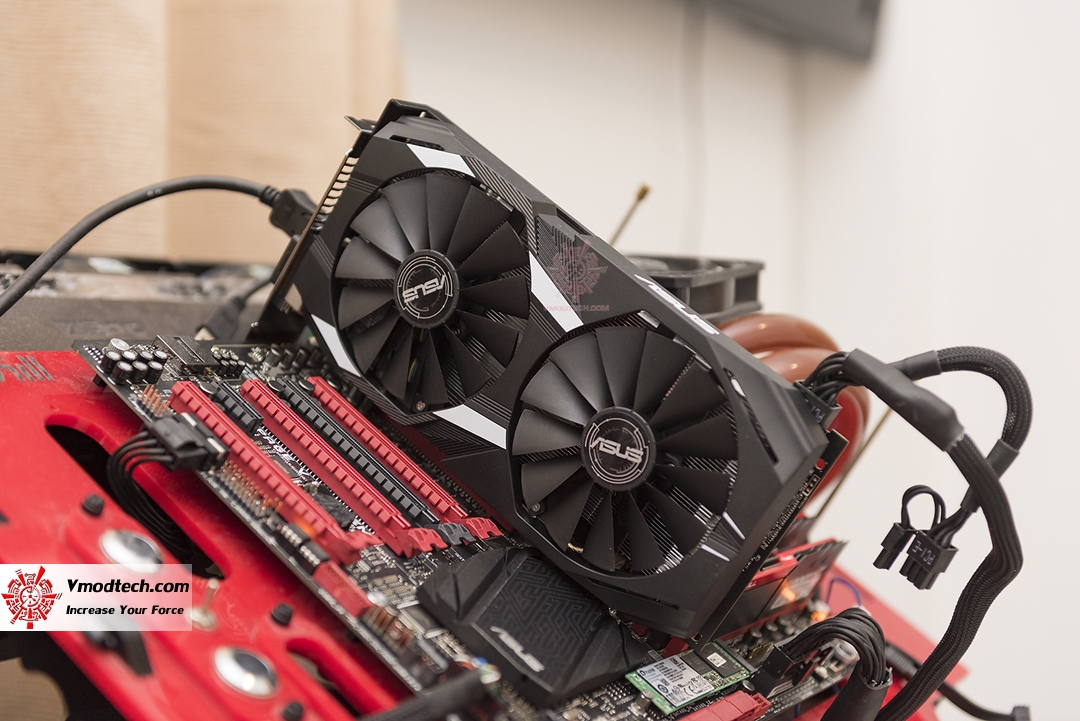 This is an effort made for the Earth, and essentially for a clean future.
This is an effort made for the Earth, and essentially for a clean future.
HDCP Support
The HDCP provides a robust, cost-effective and transparent method for transmitting and receiving digital entertainment similar to DVI/HDMI-compliant digital displays. HDCP encrypts the date transmitted between the DVI/HDMI connector on the graphics adapter and the display.
MSI Advanced Live Update Online
MSI Live Update online is designed to automatically download and update the BIOS and driver when there’s a new version online. It helps reduce the risk of getting the wrong file and minimize the trouble of searching the files from MSI website.
3-way NVIDIA SLI® Technology
Industry leading 3-way NVIDIA SLI technology offers amazing performance scaling by implementing AFR(Alternate frame Rendering) under Windows Vista with solid, state-of-the-art drivers.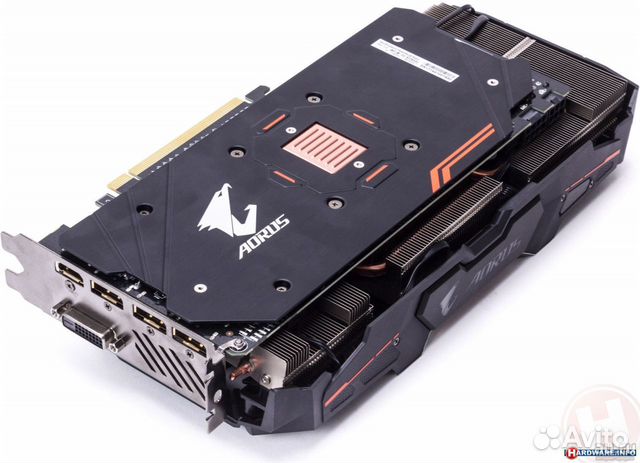
Live Update 5
MSI Live Update 5 is a single utility software that automatically checks BIOS, driver and utility updates and installs for you , which can save your time for searching and lower the risk while updating.
NVIDIA® CUDA™ Technology
NVIDIA® CUDA™ technology is the world’s only C language environment that enables programmers and developers to write software to solve complex computational problems in a fraction of the time by tapping into the many-core parallel processing power of GPUs. With millions of CUDA™-capable GPUs already deployed, thousands of software programmers are already using the free CUDA™ software tools to accelerate applications—from video and audio encoding to oil and gas exploration, product design, medical imaging, and scientific research. Free download TMPGEnc 4.0 Express Free download badaboom media converter
NVIDIA SLI Technology
Delivers up to 2x the performance of a single GPU configuration for unequaled gaming experiences by allowing two cards to run in parallel. The must-have feature for performance PCI Express graphics, SLI technology dramatically scales performance on today’s hottest games.
The must-have feature for performance PCI Express graphics, SLI technology dramatically scales performance on today’s hottest games.
NVIDIA® 3D Vision Surround
Expand your games across three displays in full stereoscopic 3D for the ultimate “inside the game” experience with the power of NVIDIA 3D Vision and SLI technology. NVIDIA SurroundTM also supports triple screen gaming with non-stereo displays.
NVIDIA PureVideo HD Technology
Blu-ray and HD DVD movies are bringing a new level of movie-viewing experience; with high-definition image quality far surpassing standard-definition DVDs. NVIDIA PureVideo™ HD2 technology provides unsurpassed Blu-ray and HD DVD movie picture quality.
HDMI convertible output
Dual-link DVI convertible output supports Video/Audio signal integration through DVI to HDMI interface, which drivers resolution of a digital display up to 1920×1200 or higher.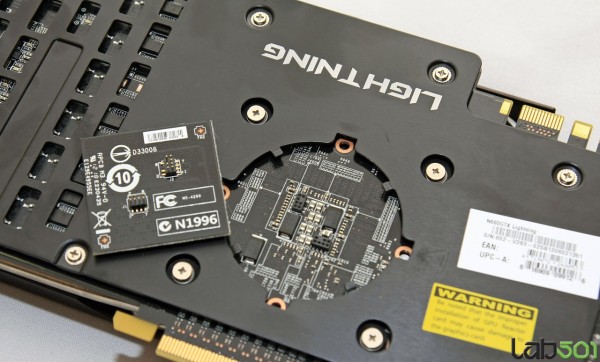
PhysX™
PhysX™ is designed specifically for hardware acceleration by powerful processors with hundreds of cores. Combined with the tremendous parallel processing capability of the GPU, PhysX™ will provide an exponential increase in physics processing power and will take gaming to a new level delivering rich, immersive physical gaming environments with features such as:
— Explosions that cause dust and collateral debris
— Characters with complex, jointed geometries for more life-like motion and interaction
— Spectacular new weapons with incredible effects
— Cloth that drapes and tears naturally
— Dense smoke & fog that billow around objects in motion
Specifications:
| Graphics Engine | GeForce GTX 580 |
| Bus Standard | PCI Express x16 2.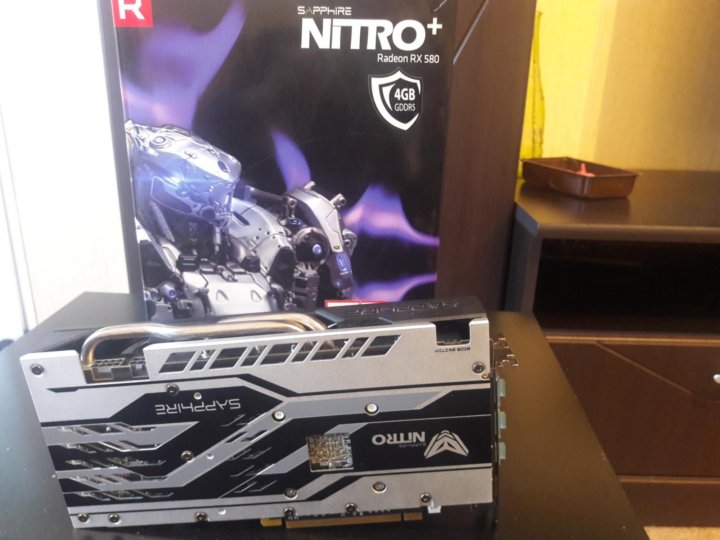 0 0 |
| Memory Type | GDDR5 |
| Memory Size(MB) | 3072 |
| Memory Interface | 384 bits |
| Core Clock Speed(MHz) | 832 (772MHz AUS Only) |
| Memory Clock Speed(MHz) | 4200 (4008MHz AUS Only) |
| DVI Output | 2 |
| D-SUB Output | 2(optional, via DVI to D-Sub adaptor) |
| HDMI-Output | 1 |
| DisplayPort | 1 |
| HDCP Support | Y |
| HDMI Support | Y |
| Dual-link DVI | Y |
| Display Output (Max Resolution) | 2560×1600 |
| RAMDACs | 400 |
| DirectX Version Support | 11 |
| OpenGL Version Support | 4. 0 0 |
| SLI Support | Y |
| 3-way SLI | Y |
| Card Dimension(mm) | 305x127x45mm |
MSI (Micro-Star International) Geforce GTX 580 N580GTX Lightning Xtreme Edition Drivers Download
MSI (Micro-Star International) Geforce GTX 580 N580GTX Lightning Xtreme Edition Drivers Download
How to Manually Download and Update:
These standard Geforce GTX 580 N580GTX Lightning Xtreme Edition drivers can be found inside of %%os%%, or available for download from Windows® update. The built-in driver supports the basic functions of your N580GTX Lightning Xtreme Edition hardware.
Our MSI (Micro-Star International) driver update instructions provide all of the steps needed.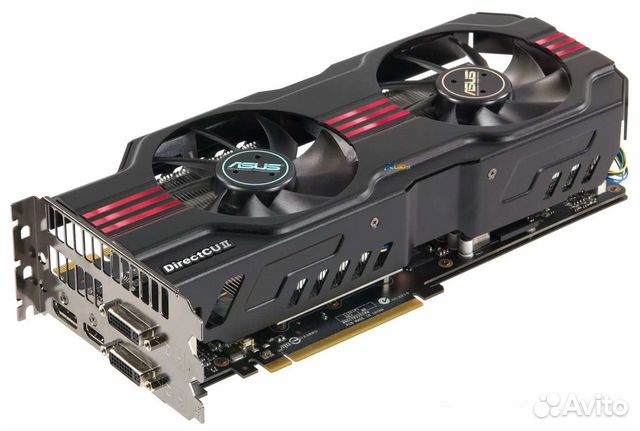
| Author: | MSI (Micro-Star International) | |
| Category: | Graphics Card | |
| Designation: | Geforce GTX 580 | |
| Series: | N580GTX Lightning Xtreme Edition | |
| Operating Systems: | Windows XP, Vista, 7, 8, 10, 11 | |
|
Optional Offer for DriverDoc by Solvusoft | EULA | Privacy Policy | Terms | Uninstall |
||
Use an Automated Tool to Update Geforce GTX 580 N580GTX Lightning Xtreme Edition Drivers:
Recommendation: If you are inexperienced with updating MSI (Micro-Star International) Graphics Card device drivers, we highly recommend downloading the DriverDoc driver update tool [Download DriverDoc — Product by Solvusoft]. This Windows utility downloads, installs, and updates your N580GTX Lightning Xtreme Edition drivers automatically, preventing you from installing the wrong driver for your OS.
Providing a database of over 2,150,000 drivers, DriverDoc not only will keep your Graphics Card drivers updated, but it will also keep the rest of your PC’s drivers updated as well.
Product by Solvusoft
Download Now
(MSI (Micro-Star International) Driver Update Software)
Optional Offer for DriverDoc by Solvusoft | EULA | Privacy Policy | Terms | Uninstall
N580GTX Lightning Xtreme Edition Update FAQ
How Do I Know When to Update N580GTX Lightning Xtreme Edition Drivers?
The common recommendation is to update your N580GTX Lightning Xtreme Edition drivers after major Windows updates.
Why Do Some People Ignore N580GTX Lightning Xtreme Edition Driver Updates?
Most people fear that they will cause a computer crash or error if they update N580GTX Lightning Xtreme Edition device drivers.
How Can I Update N580GTX Lightning Xtreme Edition Drivers?
Advanced PC users can update Geforce GTX 580 N580GTX Lightning Xtreme Edition drivers through Windows Device Manager, while novice PC users can use an automated driver update utility.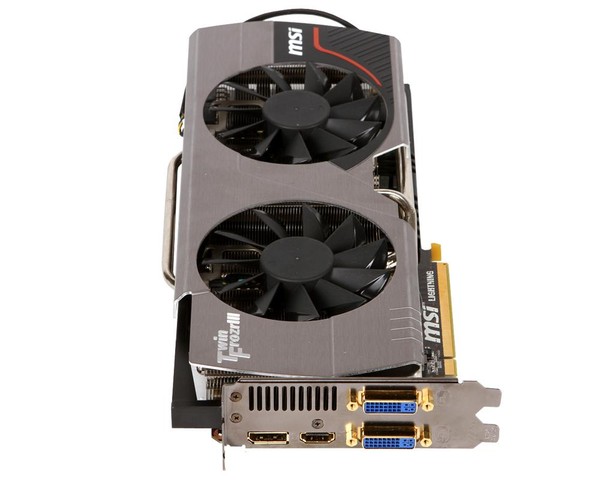
What Is the Function of MSI (Micro-Star International) Graphics Card Drivers?
Device drivers enable your hardware to be able to communicate to the operating system. MSI (Micro-Star International) has created these «mini software programs» specifically for N580GTX Lightning Xtreme Edition to enable this commiunication.
Complications of Maintaining Drivers
Geforce GTX 580 N580GTX Lightning Xtreme Edition errors may be linked to corrupt or outdated drivers of your computer. Device drivers can break down inexplicably, for various reasons. The positive aspect is that once you update your Graphics Card’s driver it will stop crashing.
Finding the exact driver for your Geforce GTX 580 N580GTX Lightning Xtreme Edition-related hardware device can be extremely difficult, even directly on the MSI (Micro-Star International) or related manufacturer’s website. Although you might have plenty of experience in handling Geforce GTX 580 N580GTX Lightning Xtreme Edition drivers, there still is a lot of time involved in this update process.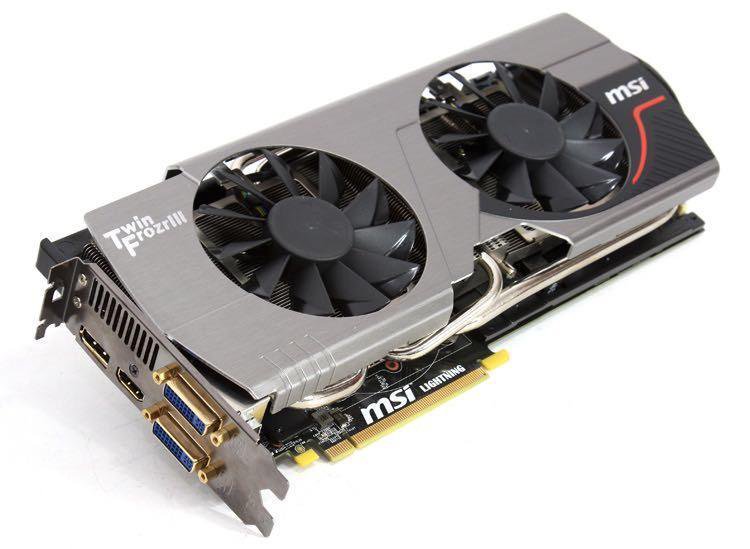 Inaccurate driver versions may have an adverse impact on your computer’s performance, often creating more problems.
Inaccurate driver versions may have an adverse impact on your computer’s performance, often creating more problems.
There is a lot of work involved in updating device drivers, so we strongly suggest downloading and installing a driver update utility. A good driver update software will ensure you have the most recent and best driver so you’re never left with a problem with your device again. Back-up files provide you with the ability to roll-back any driver to an earlier version if something interrupts or corrupts the process.
Top 2 Geforce GTX 580 Drivers (2 Models)
-
N580GTX Lightning
-
N580GTX Twin Frozr II/OC
Product by Solvusoft
Download Now
(MSI (Micro-Star International) Driver Update Software)
Optional Offer for DriverDoc by Solvusoft | EULA | Privacy Policy | Terms | Uninstall
(Advertisement)
Update MSI (Micro-Star International) Geforce GTX 580 N580GTX Lightning Xtreme Edition Drivers in One-Click with DriverDoc:
狂暴的極限效能MSI N580GTX Lightning XE顯示卡 — 電腦DIY
顯示卡
NVIDIA所推出的GTX 580以強大的效能登上單晶片遊戲卡王的寶座,因此幾乎各家顯卡品牌都有推出GTX 580的特別版,其中以軍規顯卡聞名的微星科技更是推出一款N580GTX Lightning Xtreme Edition,
內建512個CUDA核心,時脈超頻至832MHz,並且有全新設計的高效能16相供電模組,搭載著微星獨家Xtreme Edition高科技散熱器,具有最新智慧溫度偵測與氣流逆轉除塵技術。
以強大的供電模組挑戰地表最強稱號
N580GTX Lightning XE搭載NVIDIA最新40奈米GTX 580繪圖核心,CUDA核心數量為512個,是二代Fermi中最完整個CUDA架構;核心時脈為832MHz,相較於公版的772MHz,超頻幅度並不算大,但對高階卡來說因為核心工作溫度的關係使得超頻更不容易,因此使用大型的Twin Frozr III散熱器,提供了更高的散熱效率穩定超頻後的核心運作。
除了繪圖核心超頻之外,也內建了3072MB的GDDR5高速記憶體,運作時脈為4200MHz,相較於公版約提升了200MHz,核心供電採用16相設計,但並不全都是核心供電模組,因為其中分為繪圖核心供電12相、記憶體供電3相以及PLL供電1相,12+3+1總數為16相供電,並稱此供電技術為全球首創的Power4供電架構,能提升供核心與電子元件的運作效率,加上使用微星自豪的軍規元件,當然也就能提供更強大與穩定的電流,有助於超頻後的核心能更穩定的運作,甚至在時脈更高的條件下也不用擔心供電不足導致運作不穩定。
圖 / 看起來超威的16相供電模組,採用的是微星第二代軍規元件。
圖 / 顯卡背面有4顆NEC的薄膜式電容以及多顆鉭質電容
軍規元件是品質與效能的保證
有如此良好的穩定供電一切都要歸功於第二代軍規元件,分別為Hi-c CAP鉭質電容、SFC超導磁電感和Solid CAP鋁質固態電容;Hi-c CAP(Highly-conductive polymerized Capacitor)又稱為「高導聚合物電容」,其特性為穩定度相當高,更是擁有耐高溫的特性。Hi-c CAP的陽極部分是鋁箔,核心則是氧化鉭,有極高的穩定度以及超耐久的壽命,通常會使用在戰鬥機或是軍用精密儀器,甚至使用在衛星內部。SFC固態電感(Super Ferrite Choke)主要的用途是用來輸出電流,但是依照當下的使用附載情況會適時調整電流量,所以為了要維持電流的穩定度,一方面又要顧及到核心的安全,電感就顯得相當重要!而Solid CAP固態電容一樣是以軍用級的規範作為標準所製成的電容,在高附載的情況下還能確保至少超過10年以上的耐用壽命,並且更不容易爆裂。這些元件都經過第三方測試單位以軍規電子元件的採購標準進行嚴苛的測試,畢竟軍方所用的電子元件需運用在軍事硬體上,例如戰鬥機、衛星甚至各種控制系統,因此必須效能、耐用度和穩定性都要達到極高的標準!由此可知,N580GTX Lightning XE的用料絕對是效能與品質的保證。
圖 / 內部用料及設計一覽
搭載智慧型散熱器
N580GTX Lightning XE和之前推出的N580GTX Lightning很類似,最主要除了規格上不同之外,也使用了不一樣的散熱器,為了搭配GTX 580的極致效能並且提供更高的解熱效率,因此N580GTX Lightning XE所使用的Twin Frozr III散熱器是微星最新開發的智慧型散熱器,此散熱器有最重要的兩大功能,就是「Smart Temp Sensor-智慧溫度偵測」與「Dust Removal-氣流逆轉除塵」兩大技術;智慧溫度偵測的技術就是當風扇周遭環境溫度達到45度以上,藍色風扇上的特殊塗料就會開始由藍色慢慢轉變成白色,因此安裝在機殼內部時,玩家可藉由風扇的顏色改變得知主機內部的溫度使否上升,便於注意系統溫度的變化與適當的調整主機內部的散熱系統。另一種技術則是「氣流逆轉除塵」,當顯卡啟動之後散熱器上的風扇會先反轉約30秒,這樣能讓散熱器周遭的氣流反向流動,有助於去除附著在散熱鰭片上的灰塵粒子,達到每次運轉都是最佳散熱的狀態!類似的技術似乎曾出現在其他品牌的顯示卡上,不禁讓小編覺得也許除塵功能往後會在各品牌顯示卡的散熱器上看到。
圖 / Twin Frozr III散熱器結構設計
圖 / 當環境溫度達45度以上風扇就會開始反白,降溫後則會恢復。
效能實測
N580GTX Lightning XE效能表現相當優異,3DMark Vantage在P模式的測試突破3萬分大關,H模式也有2萬分以上,不折不扣是一張專業玩家級遊戲卡,而且這還沒有榨乾GTX 580的實際效能,熟悉超頻的玩家可以藉由超頻軟體來進行提升時脈,甚至適當的加高核心電壓,只要注意溫度的變化控制好核心溫度,N580GTX Lightning XE肯定能有更狂暴的效能表現!
|
電腦DIY測試平台 |
|
|
處理器 |
Intel Core i5-2500K @3. |
|
主機板 |
GIGABYTE GA-Z68X-UD7 |
|
記憶體 |
Kingston PnP DDR3 1600MHz 2GBx2 |
|
硬碟 |
OCZ Vertex2 128GB SSD |
|
電源供應器 |
Cooler Master 1200W |
|
作業系統 |
Windows Ultimate x64 |
|
3DMark 11 PROFESSIONAL EDITION |
|
|
Performance (P模式) 螢幕解析度1280 x 720 |
|
|
3DMark 11 Score |
6406 |
|
Graphics Score (圖形分數) |
6361 |
|
Physics Score (物理分數) |
6622 |
|
Combined Score (結合分數) |
6442 |
|
Extreme (X模式) 螢幕解析度1920 x 1080 |
|
|
3DMark 11 Score |
2231 |
|
Graphics Score (圖形分數) |
2017 |
|
Physics Score (物理分數) |
6606 |
|
Combined Score (結合分數) |
2749 |
|
3DMark Vantage |
|
|
Performance (P模式) |
|
|
3DMark Vantage Score |
30182 |
|
3DMark Vantage GPU Score |
25679 |
|
HIGH(H模式) |
|
|
3DMark Vantage Score |
20908 |
|
3DMark Vantage GPU Score |
18701 |
廠商資料:微星科技股份有限公司
網 址:tw. msi.com
msi.com
連絡電話:0800-018-880
繪圖核心:GeForce GTX 580
CUDA核心數量:512
核心時脈:832MHz
記憶體容量:3072MB
記憶體顆粒:GDDR5
記憶體位元寬:384-bit
影像輸出介面:HDMI、DP、DVI x2
外接電源需求:8Pin x2
顯卡尺寸:305x127x45mm
編輯部
電腦DIY神勇編輯部!什麼都會、什麼都不奇怪,神坦等級!!
更多文章 »
標籤: 顯示卡, Nvidia, MSI, N580GTX Lightning XE, CUDA核心.
News of Vladivostok and Primorsky Territory — Information Portal Vladivostok
«Black Shark» is waiting for the team
After more than two years’ break, assembly production of AAK «Progress» revived again. The assembly of the first of two Ka-50 combat helicopters, scheduled for delivery to the customer this year, is nearing completion. It is assumed that already in June he will be sent to our troops, most likely to the famous Lenin Air Regiment, based near Chernigovka.
Measure seven times!
I would like to know everything about the land of my district or city: how much it is, what has been built on it, what roads and communications are there, how much it costs on the market, and, finally, who exactly lives in this or that tower on 8-10 acres. So far, in Primorye, the chairman of the committee on land resources and land management of the city of Spassk, Alexander Kapran, has come closest to realizing the land surveyor’s dream.
So far, in Primorye, the chairman of the committee on land resources and land management of the city of Spassk, Alexander Kapran, has come closest to realizing the land surveyor’s dream.
In line… for socialism?
Among the collapse, poverty and crisis, there are islands of relative prosperity. The State Experimental Production Facility “Far East”, in the Artyomovsk village of Surazhevka, is one of them.
LuTEK becomes a benchmark
LuTEK management in Luchegorsk received an analytical report signed by V. Edelman, General Director of the Moscow Research Institute of Energy Economics, on the first year of operation of Russia’s first fuel and energy complex of a new type.
The first call will be heard by the whole of Vladivostok
One of these days the Vladivostok City Telephone Network, a branch of OAO Elektricheskaya Svyaz in Primorsky Krai, is putting into operation the first stage of CDMA base stations. We can congratulate the huge team of telephone network workers and all residents of the regional center on this holiday. Last year alone, the Vladivostok city telephone network installed about 10,000 telephones in the apartments of residents of the regional center. The commissioning of three base stations of the CDMA wireless standard makes it possible for more than 4.5 thousand residents of Vladivostok to receive a telephone. We asked the head of the Vladivostok city telephone network Lilia Nerodenko to answer questions from readers of “V”.
Last year alone, the Vladivostok city telephone network installed about 10,000 telephones in the apartments of residents of the regional center. The commissioning of three base stations of the CDMA wireless standard makes it possible for more than 4.5 thousand residents of Vladivostok to receive a telephone. We asked the head of the Vladivostok city telephone network Lilia Nerodenko to answer questions from readers of “V”.
Nakhodka was visited by its honorary citizen
A delegation from the sister city of Dong-Hae visited Nakhodka. She was primarily interested in issues of economic cooperation. Therefore, the head of the visitors was the president of the city’s chamber of commerce and industry, Mr. Che Kyung Sun. By the way, he is an honorary citizen of Nakhodka.
We will still fight asthma
Primorye became the first region in Russia where the program «Bronchial Asthma and Pulmonary Care» was developed and put into operation.
I’m not afraid of vaccinations.
 ..
..
From April 19 to April 24 in Vladivostok, the second stage of vaccinations against poliomyelitis for children aged 3 months to 3 years is being carried out. This is being done as part of an international program to eliminate a dangerous acute viral disease.
The coat of arms of Kavalerovo was approved
The municipal committee of the Kavalerovsky district approved the coat of arms of this administrative territory of Primorye. Its symbols include tin, a tiger and the famous Dersu rock.
Spring is the time for competition
Tomorrow at FENU the international competition of computer programs “Programmer-99” will start, in which university students, graduate students and young specialists will take part.
Thai New Year
FENU Oriental Institute is rich in holidays. At least 4 New Years are celebrated here: in addition to our native January 1, students of 5 language specialties celebrate Oriental, Vietnamese, Indian. And last Wednesday, for the first time in the 100-year history of the university, the Department of Philology of South and Southeast Asia celebrated the New Year in Thai, which falls on April 14th.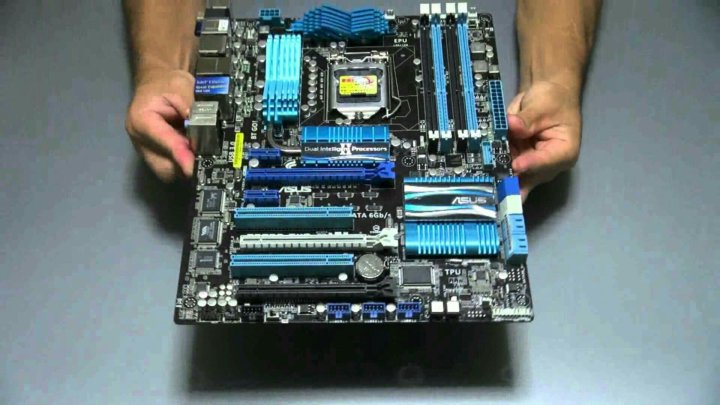
Gifts to Amur people
The day before yesterday, the Society for the Study of the Amur Territory accepted congratulations on the occasion of its 115th anniversary. This is the first scientific and educational institution of the Primorsky region today is considered one of the «richest» keepers of antiquity. Here is a magnificent library, numbering about 100 thousand items. Almost half of them belong to the rare fund. By the way, the first gift — over 400 volumes from the personal library of the Amur geographer M. Venyukov were sent to the society from Paris.
Pacific Ocean radio station — a new breath in 35 years
April 17 marked the 35th anniversary of the first radio program for fishermen and sailors of the Far East, which received a name familiar, perhaps, to every Far East radio station «.
Memorial competition
The regional ballroom dancing tournament dedicated to the memory of Olga Abaturova, laureate of all-Union competitions, the first head of the Dance World team, was held on Sunday in Vladivostok at the Sailors’ Palace of Culture.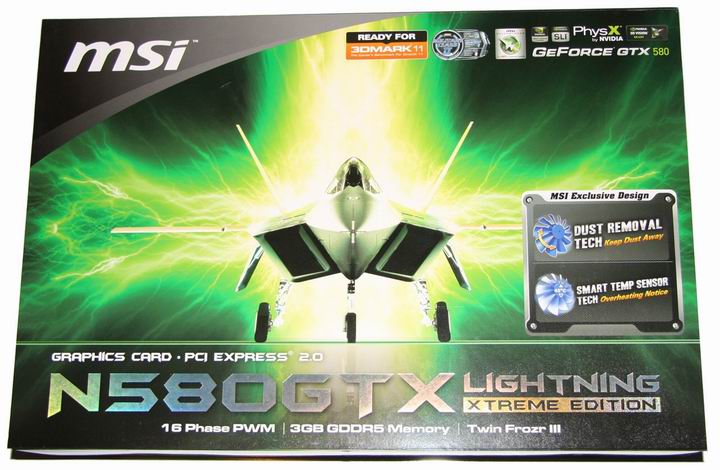
In the highest league — «Black Cats»
Yesterday in Ussuriysk the final of the regional competition KVN among the teams of the first league of the season 1998-1999 took place.
“White Lightnings” are not afraid of injuries
Last Sunday, Vladivostok State Medical University hosted young table tennis masters within its walls for the first time held the “White Lightnings” tournament. On April 21, the Commander-in-Chief of the Russian Navy, Admiral Vladimir Kuroyedov, arrives at the Pacific Fleet. According to the press service of the Pacific Fleet, his main goal will be to provide practical assistance and control during training camps of the ships of the fleet.Yesterday, these activities began in the divisions of the Pacific Fleet in the north-east of Russia, after that, the baton will be taken over by the Primorye people.0005
Firemen of the green zone
On the eve of mass trips to nature, the administration of the regional center took measures aimed at protecting the green zone. Decision and. about. Mayor Yuri Kopylov formed a headquarters to combat forest fires.
Decision and. about. Mayor Yuri Kopylov formed a headquarters to combat forest fires.
Across Vladivostok with an electronic atlas
The Primorsky Aerogeodetic Enterprise is completing work on the creation of a unique cartographic publication — an electronic address plan of Vladivostok.
For whom the Balkan bell tolls
We, employees of the Vladivostok-Novosti company, have repeatedly noted with a certain pride that among all Russian mass media our electronic pages on the Internet — both Vladivostok and Vladivostok News — are among the most popular and visited. But the electronic version is not only the ability to quickly obtain a variety of information, but also the ability to quickly correspond. And in recent days, a heated discussion has begun in our e-mail box about the events in the Balkans. The Internet is an open space that does not tolerate censorship. And the opinions that clash here are sometimes mutually exclusive. However, you can judge this for yourself by reading some of the letters that came to us.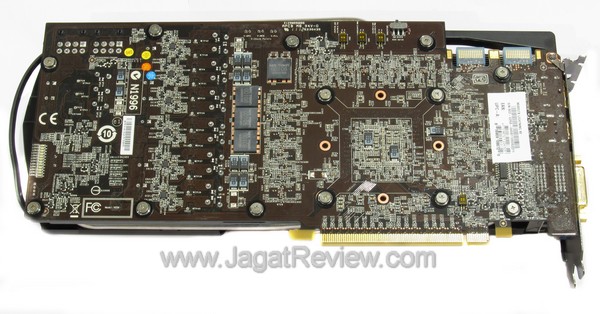
Poachers are not afraid of the cold
Last weekend, the Pacific Regional Directorate of the Federal Border Guard Service in the coastal zone of Primorye detained 8 residents of the region for violating the rules of navigation and poaching.
The flood is still on a leash
About 9,000 people in an area of 85 square kilometers found themselves in the spring flood zone in the Yakovlevsky, Spassky, Chernigov, Partizansky and Kirovsky districts, «V» was told in the main department for civil defense and emergency situations of the region. Only yesterday the water receded from the outlying quarters of Spassk-Dalny and began to drain in the Anuchinsky district.
Read Online eBook Battle Through the Heavens — Chapter 580: The End Has Come. free and without registration!
Everyone looked at the young guy in the black robe who raised his hand with great difficulty. His face was covered with traces of blood and he tried his best not to close his eyes.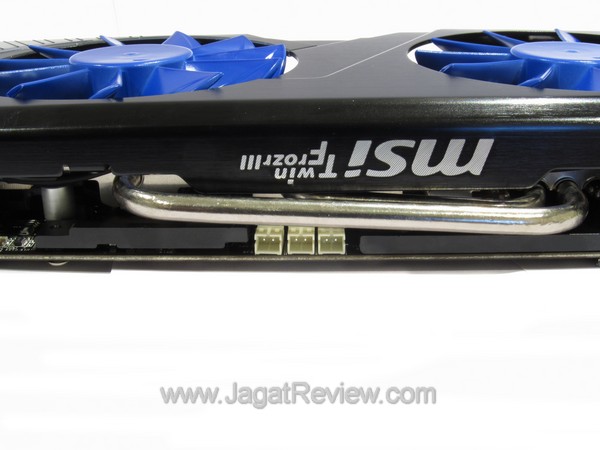 People were speechless. This guy… really is a strong man who can’t be beaten to death. He was able to retain part of his consciousness even after receiving such a terrifying remnant of the Dou Ki Technique.
People were speechless. This guy… really is a strong man who can’t be beaten to death. He was able to retain part of his consciousness even after receiving such a terrifying remnant of the Dou Ki Technique.
Surprise flickered across Su Qian’s face. At this moment, Xiao Yan had truly reached his limit. All that supported him at the moment from closing his eyes was an incredible desire to achieve the goal and get into the top ten.
Su Qian chuckled bitterly and shook his head. After thinking for a while, he slowly spoke, “This match ended in a draw. In other words, both of you can be in the top ten. So you don’t have to worry.»
Xiao Yan half-consciously heard the words of the First Elder, and only then did he relax his heart. His eyelids quickly closed and his consciousness gradually sank into darkness…
Su Qian breathed a sigh of relief again as Xiao Yan finally lost consciousness. With the current injuries of Liu Qing and Xiao Yan, they would surely miss the next few battles.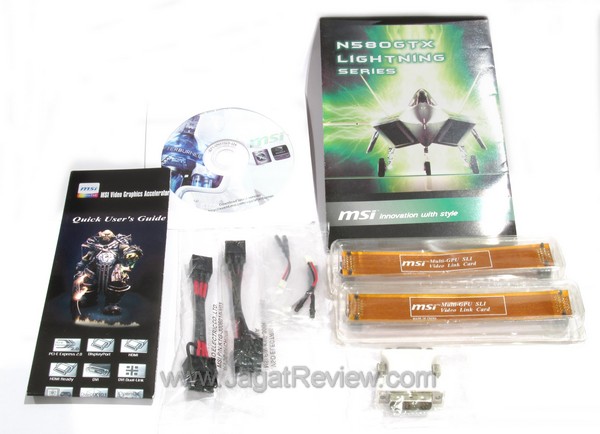 His eyes fell on the unconscious Xiao Yan again, and he involuntarily shook his head again. This guy has once again exceeded everyone’s expectations. Liu Qing was severely injured, even with his strength. Most of those present certainly did not expect such a result.
His eyes fell on the unconscious Xiao Yan again, and he involuntarily shook his head again. This guy has once again exceeded everyone’s expectations. Liu Qing was severely injured, even with his strength. Most of those present certainly did not expect such a result.
“First Elder, if both ended in a tie, doesn’t that mean eleven people will be in the top ten of the ‘Strongest Ranking’ this season? In that case, also eleven names would have to enter the tower to undergo the ‘Heart Flame Essence’ body purification?” The elder asked the question again after hesitating.
Su Qian nodded slightly and replied indifferently, “So be it, even if there are eleven names. Although the ‘Heart Flame Essence’ is valuable, the Inner Branch also holds a couple of extra plots after so many years of existence. It will not be a problem for us to provide one extra site. Otherwise, how can we explain ourselves to these two guys? In the end, if we really look at everything in detail, they both left the arena and it is very difficult to determine the winner.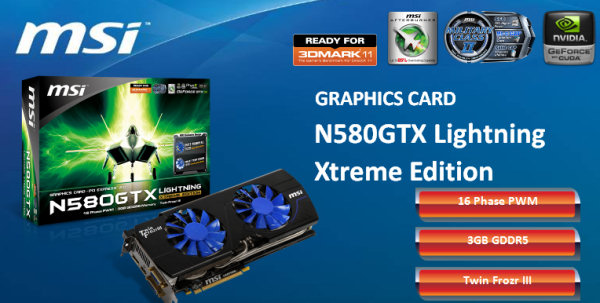 ”
”
All the Elders stopped asking inappropriate questions, nodded, and returned back.
“We will use other arenas to continue the fights. Based on the injuries of Xiao Yan and Liu Qing, they will not be able to participate in further competitions. Nevertheless, it is necessary to do an important job and determine the names of the top ten, and it does not matter that they will not be able to participate in the future. In the end, it is up to each student to personally determine what the true ‘Ranking of the Strongest’ list will look like.» Su Qian spoke softly as he looked around at the surrounding crowd.
Everyone present breathed a sigh of relief and nodded in response. The terrifying combat power of the two boys sent chills through the hearts of every student. They will be able to relax more if these two do not continue to participate in the determination of ranks.
Of course, not everyone was in the same mood. At the very least, Lin Xuya sighed somewhat disappointedly. Having lost opponents of the level of Liu Qing and Xiao Yan, who else can give him a worthy competition?
Having lost opponents of the level of Liu Qing and Xiao Yan, who else can give him a worthy competition?
The unconscious Xiao Yan and Liu Qing were carried out of the stadium and sent to the hospital for recovery, under the respectful and respectful looks of the students.
The competition continued. However, after the heart-rending battle earlier, the subsequent battles failed to shock the viewers much despite the intense fights. The remaining students involved in determining the ranks were helpless in the face of such an environment. After all, the battle between Xiao Yan and Liu Qing had almost surpassed the level of an ordinary Spirit. How could they show something like that?
The determination of the ranks continued until noon and came to its conclusion. After several passionate battles, the new list of ‘Strongest Rankings’ was announced.
The first number was undoubtedly the monster, Zi Yan. Due to her terrifying and unusual strength, forget about the students, even some of the Elders could only avoid her. Even the arrogant Lin Xuya did not have the courage to challenge the first line.
Even the arrogant Lin Xuya did not have the courage to challenge the first line.
Also not surprising was the name in second place. Having lost Liu Qing and, of course, the sudden appearance of a dark horse in the form of Xiao Yan, the remaining members were unable to challenge this position. Thus, Lin Xuya once again found himself in second place in the ranking.
The third was originally Liu Qing. But since he was forced to be absent, his place went to Yan Hao.
The battle for fourth place was much more heated than for the ranks above. However, after various battles, Lin Yan finally won unexpectedly at the end and rose in rank from ninth to fourth.
The battles for the remaining six places were no less difficult. When the participants ended, except for the two old ones, they were in the top ten, they were replaced by new ones. Due to the special lot, it is likely that they may have been lucky, but their power is still quite high. After all, the ‘Strongest Ranking’ is not a simple list of names. Even with enough luck, you need to have enough ability to secure your position.
Even with enough luck, you need to have enough ability to secure your position.
Although the list of names of the ‘Strongest Rank’ was determined, everyone had their own list in their heart, just like Su Qian said earlier. Thus, even though Xiao Yan and Liu Qing were both ranked tenth rank, everyone, including Yan Hao, who had obtained the third rank, clearly knew in their hearts that she belonged to a guy with an overbearing demeanor… No, there was another person who could stand up to her with him… Xiao Yan.
In his heartbreaking battle, Xiao Yan used his outstanding martial ability to enslave people’s hearts. At this point, no one else in the Inner Division would dare to look down on him, even though he was a rookie who had been at the academy for less than a year. At the same time, the reputation of ‘Gate of the Rock’ will rise like a tidal wave. The most important factor why the factions of Lin Xu and Liu Qing were considered the most prominent presences in the Inner Branch was because their strength left the experts of the ‘Inner Branch’ far behind.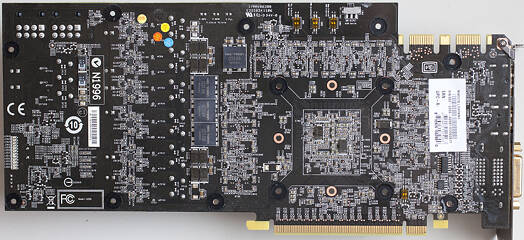 However, right now, ‘Cliff Gate’ had an expert in its roster that could be on par with them. The Rookie faction’s influence will grow at an appropriate pace in the future.
However, right now, ‘Cliff Gate’ had an expert in its roster that could be on par with them. The Rookie faction’s influence will grow at an appropriate pace in the future.
When the majority were about to leave the stadium with incomplete satisfaction after the end of the battles, another duel arose on the site, causing most of the people to be amazed once again.
Based on the rules of the previous seasons, there were a couple of sparring matches between ‘Strongest Ranking’ experts and those outside of it. In such matches, absolutely any student had the right to challenge a member of the top ten to a duel. Of course, the challenge itself is a mere formality for the Main Competitions and was a kind of entertainment after the event. Even though it was only sparring, there was rarely anyone willing to participate. After all, the top ten experts had the ability to reach the top echelons in the Inner Division. Wouldn’t such sparring be a disgrace if you made a challenge, even if you knew you were going to lose?
However, the last entertainment of this competition season made everyone put on a disgusting expression. All because the volunteer turned out to be an incredibly sweet young girl. On top of that, the one she summoned was actually the green-robed guy – Lin Xu!
All because the volunteer turned out to be an incredibly sweet young girl. On top of that, the one she summoned was actually the green-robed guy – Lin Xu!
Of course, this alone is not enough to make the whole stadium look bad. It’s just that the result of the match was…
A normal match lasted almost ten minutes. However, in a short ten minutes, Lin Xu, who had not been able to find a worthy opponent during the Main Competition, was defeated.
Cold sweat trickled down Lin Xu’s forehead as two narrow fingers stopped half an inch from his neck. He stared into the eyes of the slightly smiling girl in the green dress without blinking, feeling that his mouth was dry. He didn’t feel the slightest bit upset. This is because in the earlier exchange of blows, he was forced to step back step by step. It may have been quite a bit of time, but he was forced to use his last trump card. However, when he had already released his strongest Dou Ki Technique, the young girl waved her hand, and his technique simply dissipated.
The moment his strongest Dou Qi Technique disappeared, Lin Xu realized that this battle was pointless. The two of them were on completely different levels. The final attack of the enemy forced him to completely lose hope.
«I lost.» Lin Xuya shrugged his shoulders and laughed bitterly, although there were many shocked looks on him, “I always thought that Xiao Yan is the dark horse of this season. Quite unexpectedly, his girlfriend is even darker than himself. With your strength, you can even spar with Zi Yan.”
Most people goggle-eyed like a dead fish. They didn’t really understand what had just happened.
Especially Liu Fei. Her expression was so interesting that people could be left speechless. Of course, she had personally seen a duel with a man whom even her older cousin took very seriously, and whom she despised and cursed at times. She simply could not accept such a huge difference in strength.
“Summon Zi Yan? That little girl can go and complain about Xiao Yan ge-ge.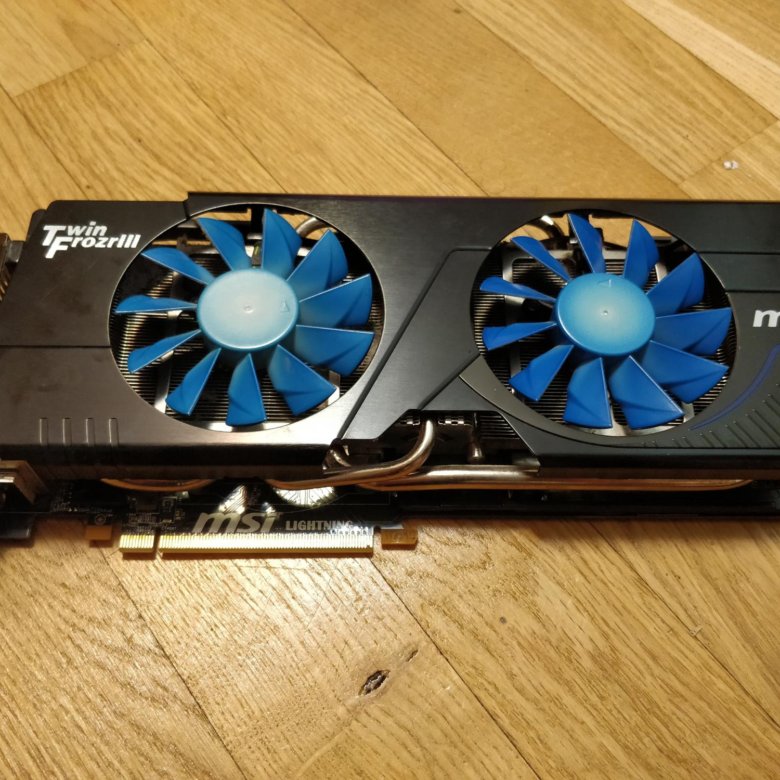 At the same time, I will be the reason for the complaint.” The setting sun was sinking below the horizon, illuminating the delicate and beautiful girl in a green dress with a special light. Lin Xu’s heart was crushed with a hammer when he saw her elegant smile. This feeling… must be called… love at first sight?
At the same time, I will be the reason for the complaint.” The setting sun was sinking below the horizon, illuminating the delicate and beautiful girl in a green dress with a special light. Lin Xu’s heart was crushed with a hammer when he saw her elegant smile. This feeling… must be called… love at first sight?
Lin Xu’s sudden feeling prompted him to spontaneously laugh. He, who used to value himself in such a way that it would be easy for him to woo any woman, found himself in a similar position…
“The reason I called you was because he wanted to see my dazzling side. Unfortunately, he couldn’t see it…» The girl said in disappointment and removed her fingers from Lin Xu’s neck.
Lin Xuya opened his mouth. He, initially the most free and walking around the Inner Division, was simply embarrassed in front of a young girl.
“Calm down, I’m not particularly interested in the second position of the ‘Strongest Ranking’. Since the sparring is over now, I need to go and take care of Xiao Yan ge-ge. » Dai Er adopted Xiao Yan’s demeanor and shrugged her shoulders towards Lin Xu and turned around sharply. Starting to move, she stepped not on the ground, which was already covered by the light of the setting sun, but her green dress developed in the wind and she gradually left the stadium. A strange silence covered the stadium, which could even frighten an ignorant person.
» Dai Er adopted Xiao Yan’s demeanor and shrugged her shoulders towards Lin Xu and turned around sharply. Starting to move, she stepped not on the ground, which was already covered by the light of the setting sun, but her green dress developed in the wind and she gradually left the stadium. A strange silence covered the stadium, which could even frighten an ignorant person.
“Why have I never noticed such a prominent girl…”
Lin Xuya stared at the retreating figure of a beauty with a blurry look, which gradually disappeared from his vision. He shook his head as complex emotions towards Xiao Yan flooded his heart once again. Envy and admiration…
Lightning of the Americas broke two world records at once // Look
The study of lightning
February 1, 2022, 16:45
- Julia Rudy
-
Lightning grows like a snowball.
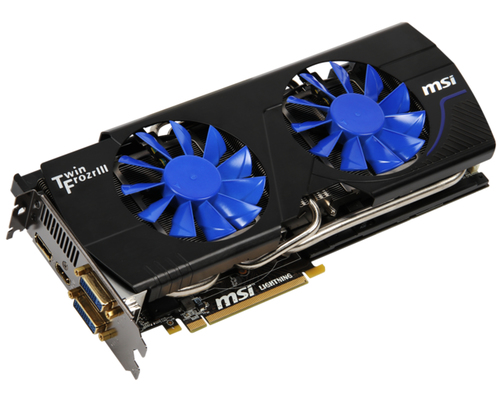
Photo by Gabriel Tovar/Unsplash.
-
Lightning grows like a snowball.
Photo by Gabriel Tovar/Unsplash.
Record lightning strikes were recorded by meteorologists in the United States, as well as Uruguay and Argentina. The length and duration of the discharges exceeded all conceivable and unthinkable limits.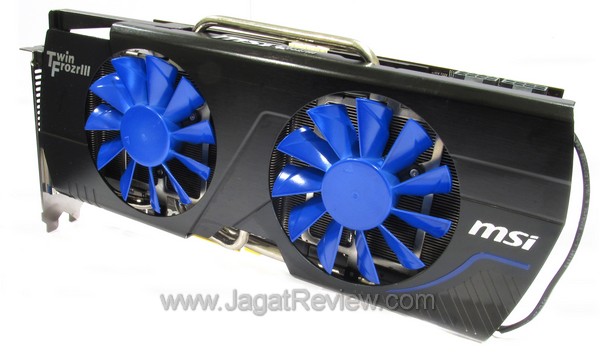
A record lightning strike was recorded by US meteorologists. The other day, experts from the United Nations spoke about it. Its length exceeded all conceivable and unthinkable limits: the record holder stretched for 768 kilometers.
This distance is roughly equivalent to the distance between Moscow and Kazan, or between London and the German city of Hamburg.
The new record was broken on April 29, 2020. Lightning stretched through the territories of the states of Mississippi, Louisiana and Texas.
In 2018, we reported that meteorologists recorded a record discharge with a length of 709 ± 8 kilometers. Two years earlier, the record holder was a discharge with a length of 321 km.
World Meteorological Organization (WMO) experts also announced a new world record for the duration of a lightning flash.
A single flash that continuously developed during a thunderstorm over Uruguay and northern Argentina on June 18, 2020 lasted 17.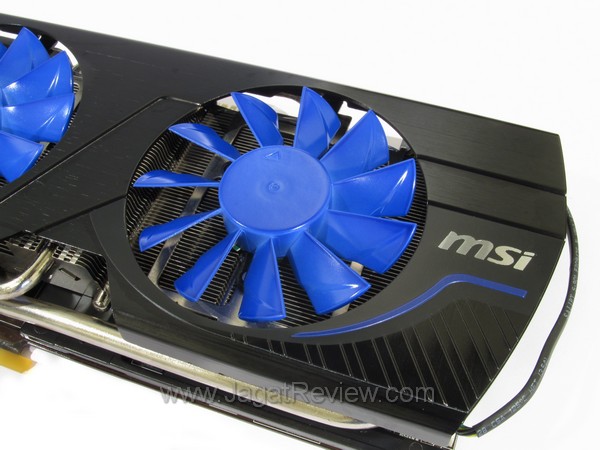 1 seconds. This is 0.37 seconds longer than the previous record set on March 4, 2019, also in northern Argentina.
1 seconds. This is 0.37 seconds longer than the previous record set on March 4, 2019, also in northern Argentina.
Note that in a fraction of a second, lightning has time to run a considerable distance.
As WMO experts explain, it is not only nature that is to be thanked for setting new records. The fact is that in recent years, technologies for studying satellite images have been significantly improved.
If the records of recent years were discovered precisely on them, then earlier (until about 2016) scientists relied on ground-based observations.
«It is likely that even more extreme events still exist, and we will be able to observe them as lightning detection technology improves,» says Randall Cerveny, WMO Rapporteur on Extreme Climate and Weather Events.
Experts also add that new record discharges occurred in the Great Plains in North America and in the La Plata basin in South America. These are the hotspots of the so-called mesoscale convective complexes that cause such megaflares.
The lightning strikes that set new records were not isolated events. They occurred during active and large-scale thunderstorms, which made them even more dangerous.
If such a discharge can spread for hundreds of kilometers, then it can reach almost anywhere.
Recall that during a thunderstorm it is safer to be inside a building than outdoors. Ideally, in a large room where there is electrical wiring or running water. It also makes sense to take cover in a fully enclosed vehicle with a metal roof.
The UN recommends using the 30-30 rule: if less than 30 seconds elapsed between the flash of lightning and the thunder (this means that the discharge occurred in relative proximity), then you can leave the house (or car) only 30 minutes after the last such outbreak.
«Lightning is a serious hazard that claims many lives every year,» recalls WMO chief Petteri Taalas. “These results highlight important protection issues against lightning originating in electrified clouds, in which flashes can propagate extremely long distances.

 The average score reflects the expert community’s view on this product. Click below and use Uk to see all ratings, product awards and conclusions.
The average score reflects the expert community’s view on this product. Click below and use Uk to see all ratings, product awards and conclusions.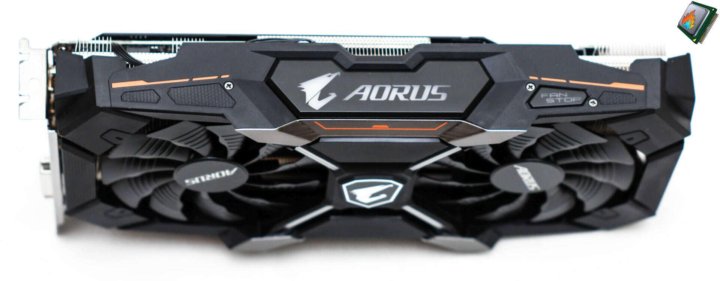 Asking the GPU to now shift in excess of 3.6 million pixels began to put considerable…
Asking the GPU to now shift in excess of 3.6 million pixels began to put considerable… Everyone’s been waiting for a 3GB GTX 580 so we couldn’t wait to get our hands on this new 3GB beh…
Everyone’s been waiting for a 3GB GTX 580 so we couldn’t wait to get our hands on this new 3GB beh… Equipped with the same Twin Frozr III cooler with two 90mm fans, the N580GTX Lightning Xtreme Edition is also…
Equipped with the same Twin Frozr III cooler with two 90mm fans, the N580GTX Lightning Xtreme Edition is also… So when I heard that they have built and “Xtreme” version of the already incredible N580GTX Lightning Editio…
So when I heard that they have built and “Xtreme” version of the already incredible N580GTX Lightning Editio… The Twin Frozr cooler on these cards particularly has caught our eye for being quiet and efficient at its task. It’s exactly why we have high hopes…
The Twin Frozr cooler on these cards particularly has caught our eye for being quiet and efficient at its task. It’s exactly why we have high hopes… com.ph
com.ph  com
com 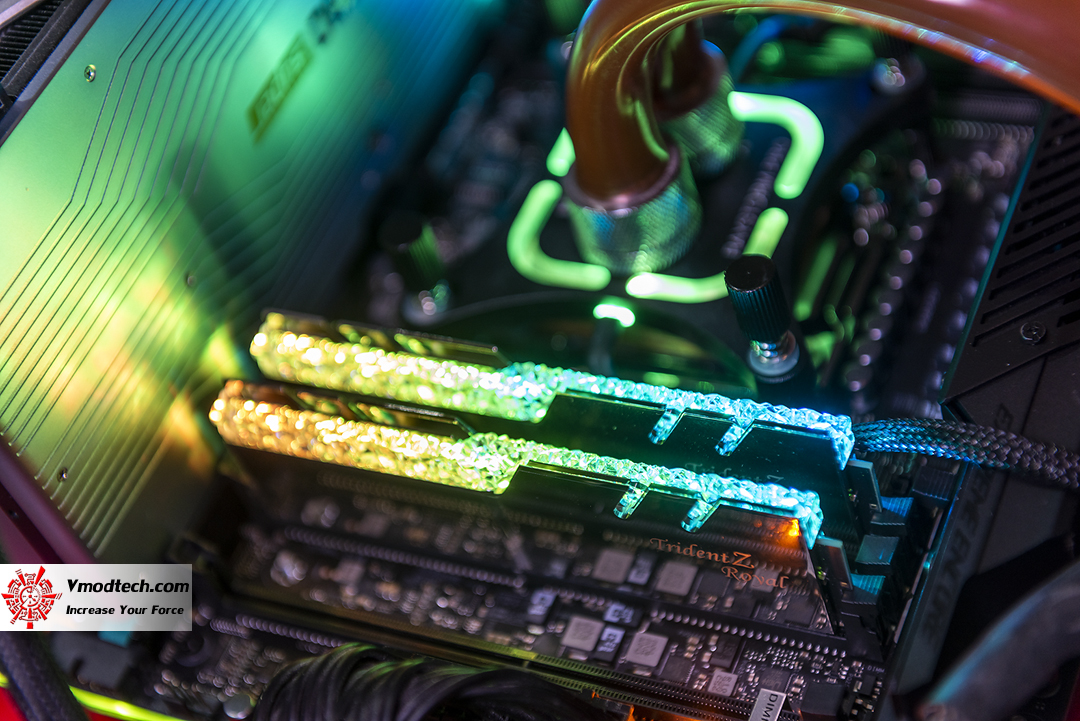 com
com 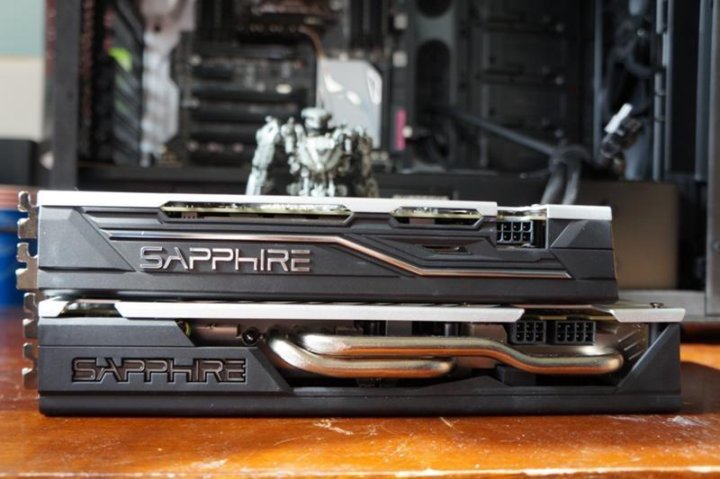 com
com  net
net  com
com  com
com 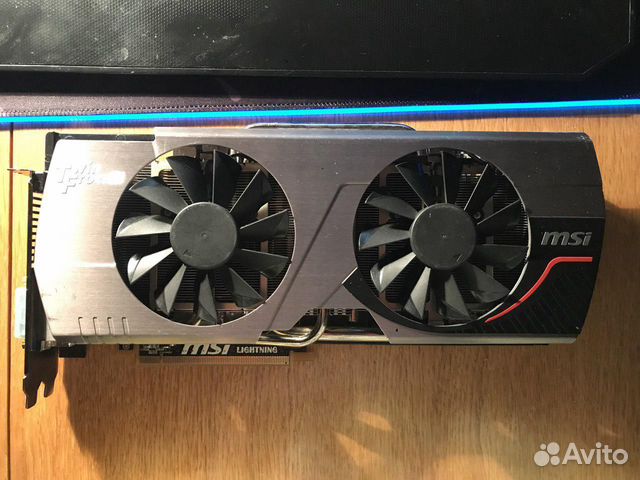 ..
.. 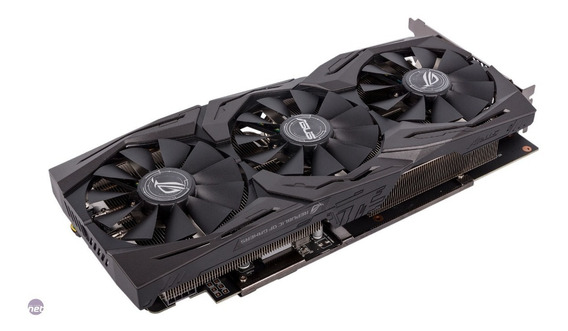 Ten years of releasing…
Ten years of releasing…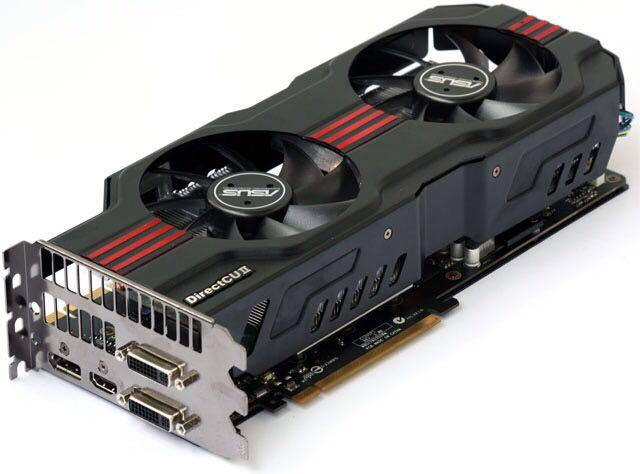 40Ghz
40Ghz